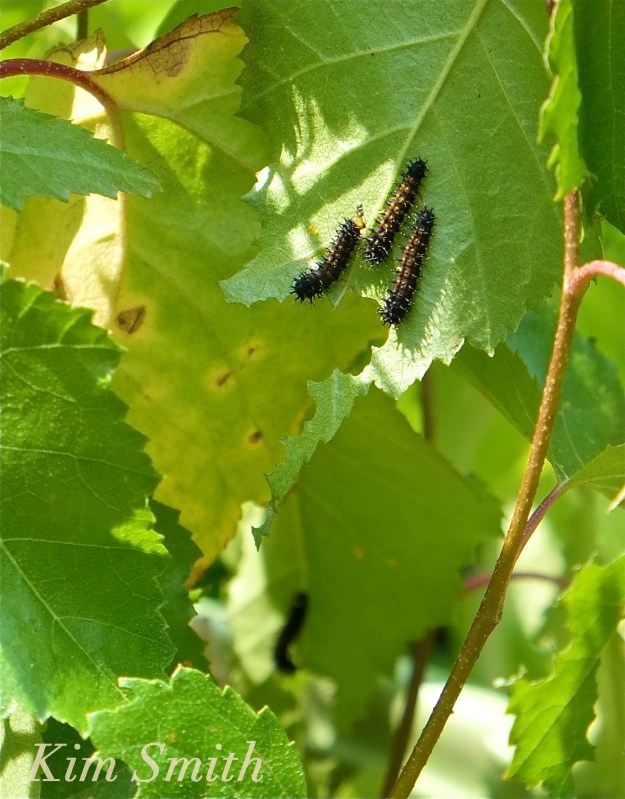NORTH AMERICA’S STUNNING AND LARGEST MOTH THE CECROPIA AND WHY THESE GIANT SILK MOTHS ARE THREATENED – PART TWO
 See Part One Here
See Part One Here
After spending the winter and most of the spring tightly wrapped in their cocoons of spun silk, the first male eclosed on the last day of May. Burly and beautiful, Cecropia Moths emerge with wings patterned in white crescent spots outlined in rust and black, sapphire blue and black eyespots, waves and wiggly lines in soft woodland hues, and a wide tubular body banded and dotted orange, black and white.
It is easy to tell the difference between a male and female because of the male’s spectacular plume- like antennae.
The females were equally as easy to identify because their antennae are comparatively more slender.
 Males rely on their superbly oversized antennae to detect the female’s pheromones.
Males rely on their superbly oversized antennae to detect the female’s pheromones.

After each Cecropia Moth emerged from its cocoon and their wings had dried, we placed them on the shrubs around our front porch. The males eventually flew off, but the females stayed in one place and usually by morning we would find a pair, or two, mating in our garden.
They stayed coupled together all day long, uncoupling sometime during the evening. We kept two of the females for several days and both rewarded us with dozens of eggs.

I had read it only takes a week or so for the larvae to emerge from their eggs and was beginning to think ours were not viable, when they began hatching today! In actuality it really took between two and three weeks for the caterpillars to emerge. Possibly the cooler temperatures during this period slowed hatching. The caterpillars are teeny tiny, perhaps one quarter of an inch, black with pokey spines. Charlotte and I collected a bunch of Chokecherry (Prunus viginiana) branches this morning as we prepare to raise another batch of stunning Cecropias.
The adults, both male and female, are short lived. Giant Silk Moths, which include Luna, Polyphemus, Promethea, and Cecropia emerge without mouthparts and cannot eat. Cecropia Moths spend several months in the larval stage, most of their lives as a cocoon, and only a week or two as their beautiful winged adult selves. Giant Silk Moths live only to reproduce.
Threats to Giant Silk Moths are significant. The number one threat is Compsilura concinnata, a tachinid fly that was introduced to North America to control invasive European Gypsy Moths. Both insects are a cautionary tale of why not to introduce invasive species without knowing the full breadth of the harm they will cause. Spraying trees with toxic pesticides that kills both the caterpillars and the cocoons is also a major threat. And, too, squirrels eat the cocoons
Hyalophora cecropia moths are univoltine, having only one generation per year. Our Cecropias began hatching just before the full moon. I have more cocoons and am wondering if this next batch of moths are waiting to emerge prior to July’s full moon.
Like this:
Like Loading...


























































